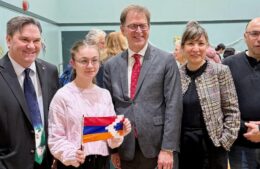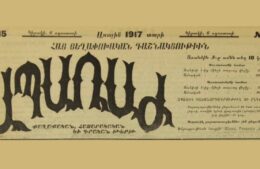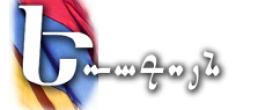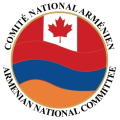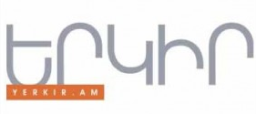The islamized Armenians of Der Zor & Syria
- (0)
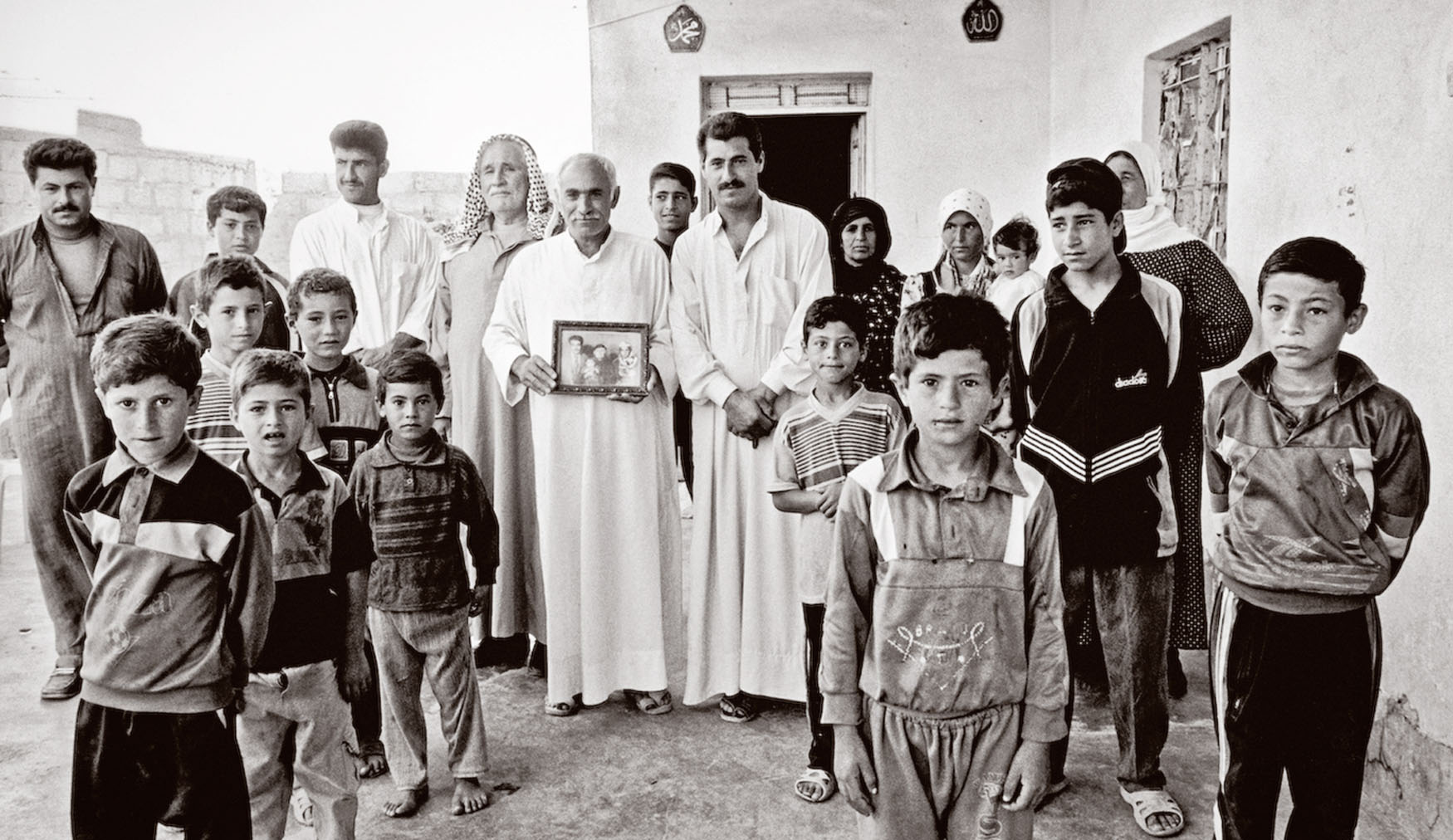
In 2001, photographer Bardig Kouyoumdjian returned to the Syrian desert, where hundreds of thousands of Ottoman Armenians found their final destination. During their deportation a few of the young men and women were lucky and survived the ordeal, defeating both starvation and disease; some others even managed to escape the cruel massacres. However, the great majority perished. This desert was literally the end of the road; the threshold to the world of the dead.
Bardig made an unparalleled journey to these forgotten places, the centers of deportation in Aleppo, Meskene, Rakka, and Deir-Zor. He also managed to find the main sites of the massacres at Shaddade, Markade, Ras-ul-Ain or Suwar. These lands carry, ninety years later, the remains of the dead and the offspring of those who survived.
Bardig Kouyoumdjian is a photographer based in Paris. He is the grandchild of a survivor of the Armenian Genocide.
The following is an excerpt from the book ‘’Deir Zor – on the trail of The Armenian Genocide 1915’’ by Bardig Kouyoumdjian and Christine Simeone (translated by Mckay Aynesworth). This is the story of the offsprings of those Armenians who converted to islam to escape death and torture after the Armenian Genocide.
* * *
… Many children of the desert saw their fate altered as a result of this policy: their lives diverted, they were saved so as better to deny the existence of their people. Like the lines on a hand, the stories of these children cross and collide, disappearing into the shadows of a hollow only to reappear in the light of a future that is cobbled together at the whim of circumstance. Who will remain Armenian, who will become Muslim, who will die, who will live, who will forget, who will remember.
Arouch Moutafian was one of those little Armenians who became de facto nomads. After the murder of her husband, Anna Moutafian left Garmoush with her mother, her sister, and her two sons, Arouch and Hagop, walking in the autumn cold all the way to Rakka. Her mother watched over the family while the children slept, for fear they might be taken. Two weeks after their arrival in Rakka, Anna and her family were led to Suwar. Their feet swollen, waking each morning under a layer of frost, the Moutafians advanced under the blows of gendarmes. Anna finally gave her son Arouch to a Bedouin who was looking for a child to adopt. Mad, cruel hope that she might save her younger son by giving away the older, believing that he would have a better chance of surviving without her. When her group reached Ain Khazel, between Mosul and Telahfeli, the Turkish soldiers abandoned the exhausted deportees there, feeling their mission was accomplished. Death was supposed to finish the job, naturally, but it did not have time to do its work with the Moutafians.
Anna and her sister followed some men who had come from the Sinjar region in the Jezira plain, where the Turkish and Iraqi Kurdistan territories overlap. They were looking for two servants for the head of their Kurdish village. During this time Arouch was growing up with the Mrech-el-Khabour in the Djbour tribe, calling himself Khalaf from then on. Growing up, life was hard; Khalaf almost died of dysentery, thrown into a hole by his adoptive mother. He had to fight to eat. The day the sheik killed a camel, the forty adults in the family were able to indulge themselves, but the children had to wait until they could retrieve the bones to gnaw on. Two years later, by a chance encounter, Anna learned that Arouch was indeed alive. The sheik demanded an exorbitant price, ten pieces of Ottoman gold, in exchange for the boy. Anna waited until the armistice to rescue him with the help of some English soldiers. Arouch-Khalaf once again saw his little brother Hagop. One spoke Arabic and the other Kurdish, one was accustomed to a sedentary life, the other, a nomad, was nostalgic for life in a tent. The family then went to live for another four years in Garmoush, after which the Turks chased them out once and for all. I photographed the three sons of Hagop at Deir-Zor. As for Arouch, the family is reticent about his fate. Married to a Christian Arab, he is no longer in Deir-Zor, and that is all I shall know about him.
I also met a man whose life history definitively changed course in the nomads’ tents. Born Hagop Dogramadjian at the beginning of the twentieth century, he died with the name Abdallah Talal nearly a century later in the vicinity of Tel Abiad near the Turkish border. Hagop remembered that his mother had abandoned him. She had probably hoped to save him by giving him to a Bedouin before marrying a sheik, whom she left when the armistice was declared. Years later she underwent a search to find her son Hagop again; she recognized him thanks to a birthmark on his back. Hagop-Abdallah, owning land and animals, was a successful Bedouin in one of the most barren places in that desert region. One of his sons was raised as an Armenian in Aleppo by Hagop’s mother. I saw a tear roll down his face, a drop of the past coming back to him, and carrying away with it all the words that could have informed me about his childhood. Here, the villages dot the roads, with their little houses every few kilometers. The families have one building for the women and another for receiving visitors. One enters a large rectangular room where the ground is covered by a khsir serving as a mat. With one’s back against the wall, seated on the ground Roman-style or with one’s legs crossed, on long woolen rugs that line the edges of the main room, one savors the tea that the women have placed at the entrance before running off. The women, a scarf over their heads, covered down to their ankles, live apart. One must hurry to photograph them, permission is always an exception, they owe this to an “Armenian” come from afar. The granddaughter of Ali Vannes, twenty-two years old, confided in me that she felt Armenian and especially different when she strolled with her girlfriends along main street of the village of Hawayej Diab. Different and proud to have Armenian blood. The grandchildren of Ali Vannes asked me for books to learn about the history of their grandfather and that of Armenia. This man, born Hovannes, became Ali when he was taken in by the sheik Assad el Bachir, and Vannes is the Arabic pronunciation of his Armenian given name. I am the first Armenian to have visited this family since the 1950s.
In Marat, near Deir-Zor, the Wafik Abbouds are well known as the descendants of Serpouhie, a little girl who survived the genocide. Serpouhie’s family was deported from western Turkey. Having left from Tekirdagh, her family arrived in Deir-Zor stripped of all their belongings. Serpouhie’s mother died there. Her father, who had been employed as a gravedigger in Meskene, ended his journey as a deportee with his two sons in Markade, where they were finished off. Serpouhie, a Christian, was taken in by a family of Bedouins and set up house with a Muslim. Her son Abdel Samed Wafik Abboud knows that he is the child of a Christian turned Muslim. Upon her death in 1998, he gathered together the two kilos of gold that she owned to have a mosque built in her memory. The locals call it the mosque of Um Serbille (Serpouhie Mayrig in Armenian; that is, Mother Serpouhie).
I asked Abdel if he had any objects to show me. He took out a photo of his parents and made me the priceless gift of Serpouhie’s snuffbox. “This snuffbox contains the breath of my mother,” he said, “and I would like for it to return to an Armenian family.” I was not expecting this. These people were giving me a precious treasure, a part of themselves. Abdel feels Armenian, he knows his origins, he is married to an Armenian, and no one can take away the fact that his mother is Armenian. Abdel’s son says, “I too am Armenian,” but he knows that he has become the prisoner of an identity that is foreign to his origins, too far removed from the Armenians living in town. One day Mazen, Serpouhie’s great-grandson, came up to me to tug on my sleeve and say, “Listen, I also am Armenian, and not just half, because my mother is also Armenian.” Several times I ran across Arabs who were proud to announce an Armenianness that one could not guess from their daily lives, happy to encounter at last “an uncle,” a way of clinging to a branch of a people they would like to know more about. In this there is neither provocation nor derision nor confusion, but, doubtless, a need to signal a break in the thread of history. Armenian, Bedouin, Ali, Hagop, Abdallah, the names become tangles, the paths become confused; who are the hybrids, descendants of the planet of horror and the barbarism so dear to humanity? Bedouins of today, they know they were Armenians yesterday; Muslims bending before Allah, they once joined their hands and raised their eyes to heaven to beg Christ’s mercy, and in this unchanging world of nomadism, the sons of Allah are suspicious of them, and the sons of Christ have abandoned them. These children of Christians turned Muslim are accepted neither by the Bedouins who are native to the desert nor by the Armenians who have preserved their Christian heritage.
Today Armenians and Arabs pay homage to the Bedouins who “saved the lives” of those children, even organizing thank-you gatherings. Life after the genocide had to be put in quotation marks in order to smooth over the stumbling blocks of history on these arid plains. Survivors of the genocide such as Hagop-Abdallah were twenty years old in the 1930s when the searches for survivors in the villages around Deir-Zor ceased. Being Armenian no longer had much meaning for them, and leaving the Bedouins would have plunged them once more into the unknown. Did they ever have a chance to denounce, debate, or interrogate someone about what happened to their relatives? What was said about the ambiguity of the situation in these families who chanced to take them in, whether to protect them or to use them? Did these children have the possibility of repeating their own history to themselves, for themselves, deep down inside? Very often they know nothing of their origins, their name, their birthday, or their parentage. Their children and grandchildren are trying to take up the thread again.
When Ait Badras saw me arrive one day in June 2002, he pointed his finger at me and said, “You, you abandoned us in the desert.” He knew that I was looking for Armenians and had agreed to receive me, along with the priest of Deir-Zor. Ait is Armenian; both his father and his mother were Armenian. Regarding his mother Khatoum, he knows little, just that his parents entrusted him to some Bedouins, beseeching them to teach him to eat with the spoon they gave him. Ait belongs to that generation of Armenian children whom the nomads tried to marry to each other. The Badras family, with its nine sons and daughters, lives in a stone house in a little village neighboring Deir-Zor, near Hatla, in a rather verdant but dusty landscape. Wheat fields lie next to pastures for sheep, whose wool piles up in enormous jute bags near the houses. Ait’s daughter studies at the university in Deir-Zor, and at the time of our meeting, she was doing research on her family. The Badras family knows almost nothing about the genocide, just that “they” were adopted. Strange expression, this idea of adoption as an act of destiny applied to some unknown and ill defined “they,” as if all their descendants felt thus adopted, attached by chance to a family and to an Arabic way of life. Ait remembers only two words in Armenian, which his father Bedros Mgrditch David Tchaouchian must have taught him, “hats” (bread) and “tchour” (water). He repeated these two words for me like a child that is proud of showing off what he has just learned, at the same time hoping he is not getting it wrong. Ait the Muslim feels cut off from a kindred people whom he does not know in any case. “Why can’t you accept us as Muslim Armenians, can’t there be Muslim Armenians?” he asked me in desperation. He wants to be recognized for what he is today, just as his father was before. I answered that I did accept him as he was, and he retorted, “Religion, you know, is personal, and I am truly Armenian.”
Ait Badras’s daughter is determined to learn Armenian, and her son dreams of pursuing his studies in Armenia. I wondered why the Armenian community of Deir-Zor did nothing to pass on its culture to families with the same origins. The priest who accompanied me quickly put the brakes to my enthusiasm. According to him, that would cause many problems with local Arab populations and would be seen as an attempt to convert Muslims to the Apostolic rite. “Anyway,” he added, “suppose a Bedouin becomes Armenian again and wants to marry an Armenian; no young woman of Deir-Zor would want him, for he would be seen as a Bedouin in the pejorative sense of the term.” These desert people do not belong anywhere.
Married to each other in the beginning, later to Arabs, today they find that the genocide’s offspring who remained Christian make no effort to cultivate relations with their Muslim brothers. Ait’s provocative remark when I arrived reveals this feeling of abandonment. Before I left he asked me to look for other Tchaouchians elsewhere. Similarly, the Mohammed Moussa Artine family, originally from Mreïhieh, walked kilometers to give me their contact information in the hope of rediscovering some relatives.
Like an abandoned child, Ait is completely in the dark as to his parents’ background. Family culture and traditions have been lost, though not by choice; he knows they existed, but he knows nothing of them, as if he had been engendered by the void. This is characteristic of those children brought up for better or for worse with the Bedouins, with no family surviving elsewhere, and for whom humanitarian organizations, as well as the good souls who got it into their heads to find young Armenians among the nomads, have arrived too late.
